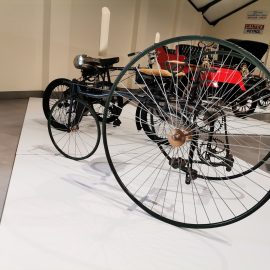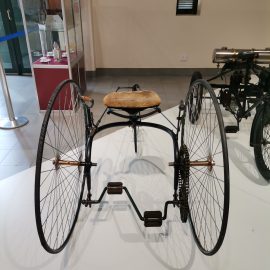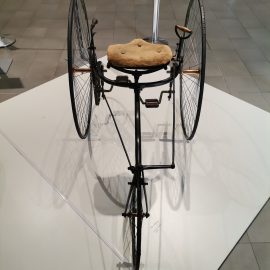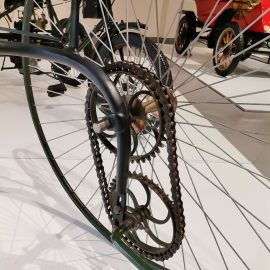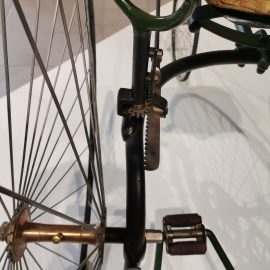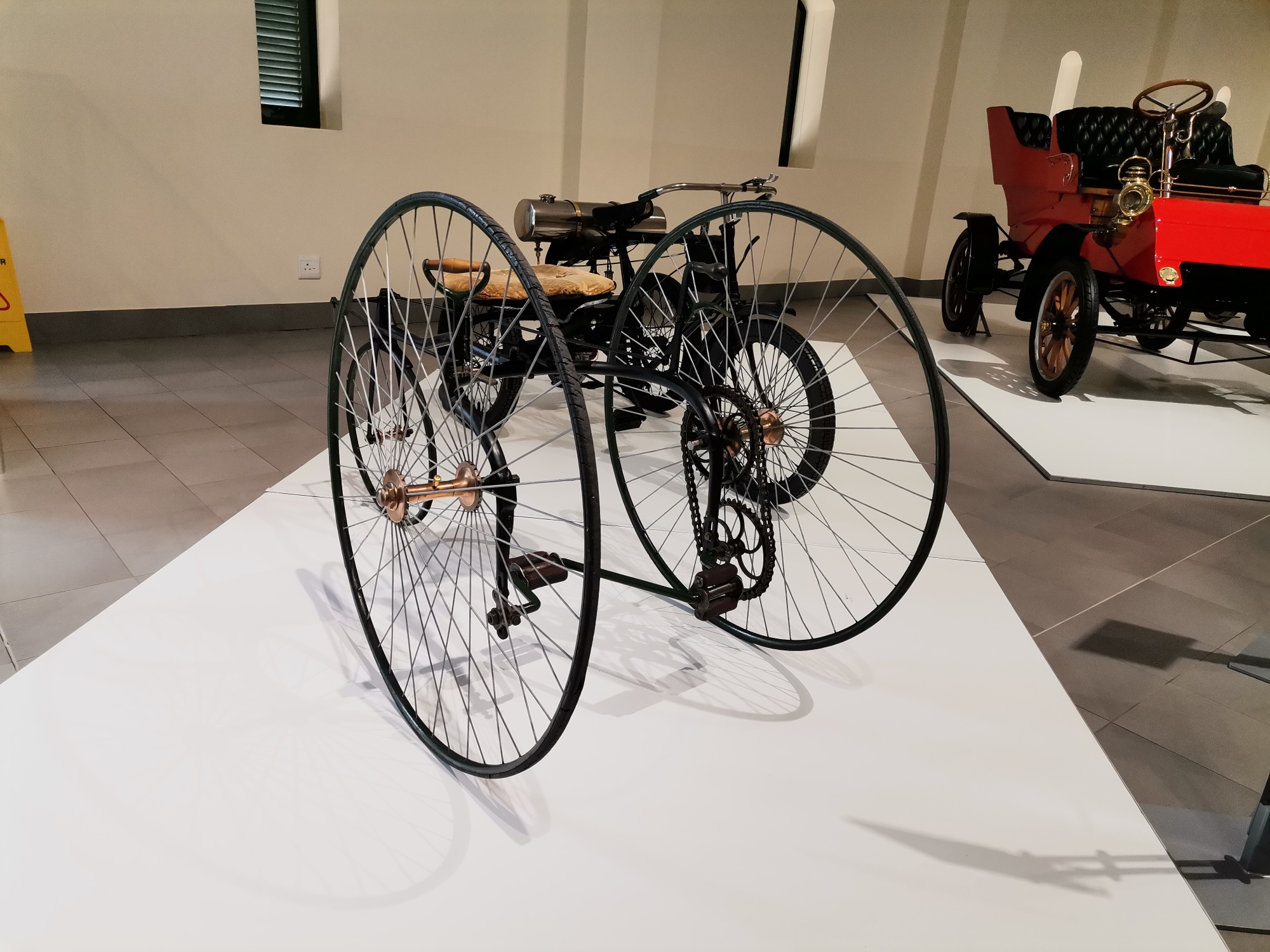
31 Mar Stories From the Stacks: Pedal Power
A regular series about the museum’s motoring memorabilia and behind-the-scenes activities, compiled and written by FMM’s Assistant Curator Sian Theron. This month, Sian looks at an item that requires pedal power rather than horsepower…
While FMM is very much a motor museum, we also have a considerable historic bicycle collection. In a small deviation from motor vehicles, I decided to take a look at one particular gem, an 1885 Starley Rear-Steering Tricycle. This is a very unusual machine, not only because of its layout. What makes it particularly special is that it was designed by English inventor James Starley, who is commonly considered to be the driving force behind the English bicycle industry, as well as being the genius behind many innovations we still use today.
Starley started out working at a sewing machine company in London and later moved to Coventry where he soon started designing and patenting sewing machines for the Coventry Sewing Machine Company. (Many of his sewing machine inventions are still apparent in modern machines.) After his nephew, John Kemp Starley, introduced him to the Boneshaker bicycle, Starley soon turned his attention to bicycle design and in 1968 designed the Coventry Bicycle.
James Starley was responsible for the invention of the chain drive, differential gears, as well as of tangent wire spokes. His innovations also include variations on the Penny-farthing and many different forms of tricycle with the rear-steering version being one of them. The Starley family legacy has continued with John Kemp having been responsible for the Rover Safety Bicycle. The next development embraced electric bicycles with a move towards motorization, which ultimately led to the creation of the Rover Car Company with his cousin William Starley.
But back to the rear-steering tricycle in the FMM collection. It is a prime example of James Starley’s ingenuity and inventiveness. The tricycle is very elegant and offers a shaped seat with a removable straw stuffed pillow. Two large front wheels lead the smaller back wheel that is operated with an ingenious crank system on the right-hand side, where a small handle can be turned left or right to control the direction of the smaller third wheel, thus steering the tricycle in the direction the rider wants. Another lever on the left-hand side offers a fast direction change should it be required.
This tricycle also offers an example of an early chain drive that is situated on the left-hand side. Tricycles were most often used by women as the design was more accommodating of the voluminous skirts worn at the time.
The Starley Rear-Steering Tricycle is currently on display in Hall A. Further bicycles, including Penny Farthings as well as two Boneshakers, can be found in Hall C.




